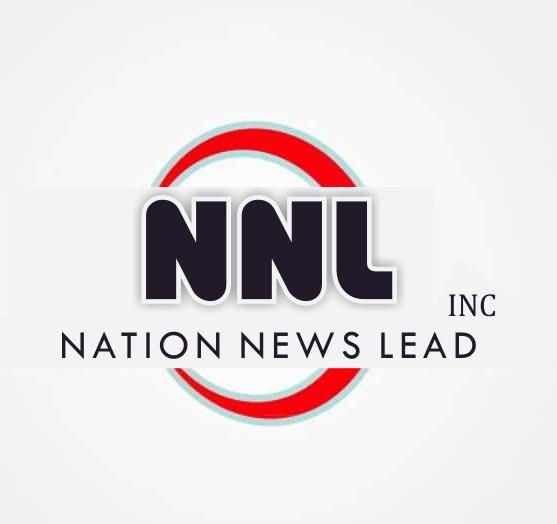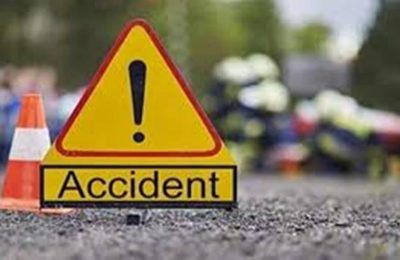Lagos State governor, Mr Babajide Sanwo-Olu, in this interview, speaks on his administration’s drive on transportation, power, the Fourth Mainland Bridge, among others. ‘Laolu Afolabi brings excerpts.
In your first term as Lagos State governor, what made you proud the most?

We had an economic agenda that Lagosians were truly proud of, which is the project THEMES. You know, in all of the six pillars of project THEMES, we believe that we have done creditably well for the citizens, for Lagosians to benefit in different aspects of the economy, in transportation, health, education, entertainment, tourism, in also even making governance accessible, you know, and the understanding that there’s a shared responsibility in the pillars of governance, you know, the legislator, the executive, and the judiciary.
So that’s on a broader scale of project THEMES itself. We believe we have actually touched almost everything, but in specifics, the achievements that I personally am very proud of are things, you know, around the red line, the blue line that we’re able to deliver extensively in the last four years.
The blue line was started before me, but we’re able to bring it to completion. The red line, we started, you know, from scratch. And we’re like 95 percent, which still gives credit to that tenure. So that will change the phase of public transportation in Lagos. It’ll reduce journey time on all these two real corridors. And people will have a better journey experience, even given the issues of, I mean, removal of subsidy of petroleum, it will just meet those aspirations. Another one that I also say we’re proud of is the fact that we’re able to raise finance in a partnership, and complete the Lekki deep sea port, which is $700 million, private sector funded, but we’re partners. We’re also equity partners in the port, which is like the deepest deep seaport in West Africa. And it’ll help enhance inflows into the country from the port arena and other infrastructure that we’ve also embarked upon.
We haven’t started the fourth mainland bridge. It has taken us a lot of time to finish the conception. So that will also start very soon. Other landmark projects like the rice mill that we’ve completed, the big food chain market food market logistics hub that we’re currently doing.
The fact that we can also do softer things like improving the rate of WAEC student successes, our interventions in health have seen an increase in the number of students passing WAEC with five credits, English and Math. The number has moved from under 50 percent for some even to 80, 82 percent in yearly WAEC results. Another one that we can also talk about that gladdens my heart was that during COVID-19, a global pandemic, we were able to rise up and be able to halt it in terms of fatality and in terms of the effect and the consequences for our citizens.
So, in general, we’ve seen landmark achievements in some of these areas of fiscal, core infrastructure, soft infrastructure and I think whilst there’s still a lot to be done, I think the first term, the last four years has been very formidable for us. And, and I can tell you another one. In four years, we doubled the budget of Lagos.
We came in, we inherited a budget of about N800 billion, right now we’re doing N1.7, N1.8 trillion. Those are significant figures lifted, it’s not just by mouth that we say Lagos is fifth largest economy in Africa. We’ve seen that growth. And if you compare our growth with some of our peers, some big cities like ours, we’ve grown on a compounded level year on year, more than a whole lot of them.
We’ve brought investment into the tech space, over a billion dollars in hyper scale investment. We’ve increased access to technology and IT infrastructure in the state. I can continue on and on, you know, in the last four years. But, like I said, the work is not finished and we continue to ensure that we can be of service to our citizens here in Lagos. Year on year, we see that almost 65 percent of even total foreign investment into the country comes into Lagos.
You said the rail line is 95 percent completed…?
The blue line is completed. Well, it has not been used. So, so essentially what we’re waiting for, because the blue line is what we call an electronic rail infrastructure. So we’ve actually almost completed the independent power that we needed to build for dedicated power to the rail because it’s electric. The tracks are electric. The electric tracks must not have disrupted power because you can imagine a train moving and it stops because of a power disruption. It must be seamless, and so we have to build an independent power plant. Global disruption has delayed us for about three, or four months. But they’re almost in the country now. So it’s just to fix the plant.
But, in the interim, we’re hoping that we can start the blue line by the end of August. That’s the blue line, because we’ve installed the normal power that we have, but they cannot give you 24/7 power. That’s why I’m saying we’ve finished, but the power needs to be set in. It’s a gas flared IPP. It’s like 12 megawatts.
How much will that cost?
It’s well over $20 million actually, because it has different components that have to come to it. We have to build a third rail, which has crates of transformers all along the rail track and ensure that the power connectivity all throughout the rail track is not disrupted at any point in time.
So for the red line, that one will be diesel-fired. The trains are here, but with this one, we need to build bridges that the trains will go underneath, because part of it is a track that the Nigerian Railway Corporation would also be using for the Lagos/Ibadan rail track. So we’re sharing tracks at some places, we cannot but use diesel because that’s what they’re using.
So those are just the hard infrastructure that we’re waiting for. But before the end of August into September, we start commissioning terminal buildings.
And when do they go commercially live?
We say towards the end of the third quarter, which will be probably September or October. We even need it now more than ever before because of subsidy issues and so we’re working round to ensure that our people feel the impact in their public transportation.
What is the capacity of renewable energy in Legos at the moment?
Not a lot. What is happening with that is that there have been just individual interventions. There has not been an intervention as a state on its own. So we need to be able to raise finance and do an end-to-end IPP, even with renewables, maybe something like build like a solar farm where we will know that we’re dedicating this 10 or 20 or 30 megawatts that will be coming out from the farm. For now, individual houses are just having three, four panels and everybody just tries to do his own thing individually. But once we have the whole law out, then we also can see where the investments are and how we can work with the Discos on a willing buyer, willing seller basis and, be able to sit down and say, this is what we need to invest in.
Do you have an idea how much the state will require in financing power?
It’s a lot. If you do a straight rule of thumb and say it’s about a million dollars for a megawatts, so if you are saying you want to develop a thousand megawatts, that’s about a billion dollars.If you’re saying 10,000, that’s about $10 billion. So that’s just the rule of thumb. It’s about $10 billion of investment over the next 10 years to be able to meet those kinds of needs.
So it could be an investment opportunity of up to like $10 billion to be able to meet about 10 gigawatts, which is 10,000 megawatts of power. It will not be anything lower than that.
The fourth mainland bridge sounds like an ambitious project. What’s the progress on that?
With the bridge, we’ve done the difficult part which is going through a very rigorous tendering process, because it’s supposed to be a concession. Concession, meaning we’re not using public funds; we’re using private funding for the construction. We believe that it is viable enough for private funding to come. The whole exercise started with over 35 bids competing for it and it’s taken a lot of time. They did a lot of diligence, a lot of data analysis and so we’ve narrowed down to a preferred bid, which we announced last year. They are now at the contracting stage. We’re finalising the concession agreement with them and they’re doing their financial raise to be able to do a financial closure because, once they start, they must know where exactly the funding is going to come from.
We’re hoping that we can do groundbreaking right before the end of this year. It’s a 37 kilometre road and bridge. So, it’s not just the Fourth Mainland Bridge, it’s a full complete ring road that will take traffic in and completely out of Lagos. It’s planned to exit finally on Lagos/Ibadan Expressway, right from the Island, from Ajah axis, which is where the bridge will tee off from. So the designs are completed, the finances are being raised, it will certainly not be less than a billion dollars, legal documentation are also being addressed. Like I said, we’re hoping that we can do groundbreaking before the end of the year.
We’re believing, based on the timelines, that the first phase of a completion, which would be the sea crossing, should be completed in the next two and a half years.
How do you see the Fourth Mainland Bridge easing traffic congestion and bringing development to Lagos?
Like I said, it is a ring road, it’s like you’re taking off traffic. It’s like an M25, a journey that probably will take you from one path, take you about two hours, or an hour and a half but now with that ring road, it’s probably just going to be 25 minutes, 30 minutes.
You can see the benefit immediately because it will reduce traffic and it’ll improve journey time. And you will now also see new developments on the alignment that the road will take. People say Fourth Mainland Bridge but the bridge component there is less than 10 kilometres. In fact, it’s far, far less. It still has about 20, 25 kilometres on land. That’s why I say it’s like a ring road opportunity. So there are all sorts of opportunities, development on all of the alignments. That’s how the city will also grow. Once you have massive routes opening up like that, it affords new construction, new development and property value, land value. These are just some of the benefits that the citizens will see over time.
YOU SHOULD NOT MISS THESE HEADLINES FROM NIGERIAN TRIBUNE
VIDEO: Alema of Warri buys customised 2023 Maybach for wife, Natasha
Chief Emmanuel Uduaghan, the Alema of Warri Kingdom, in Delta, has bought a new vehicle worth millions of…
Call on God to kill me if … — Pastor Adeboye
Pastor Enoch Adejare Adeboye, the general overseer of the Redeemed Christian Church of God, has said to call on God to kill him if…
Military rejects requests to topple Tinubu’s Government — DHQ
The Armed Forces of Nigeria, AFN, has rejected requests by Coup instigators to topple the democratically elected Government of…
Petrol pump price may jump to N750/litre — IPMAN
The association’s national spokesperson, Mr. Chinedu Ukadike gave the hint while speaking to…
#BBNaijaAllstars: Food crisis looms as housemates lose weekly wager
Big Brother Naija All stars Housemates have lost the first Wager task, which means for the next week, there will be…
Heavyweight bout: Anthony Joshua knocks out Robert Helenius in seventh round
Robert Helenius was defeated by Anthony Joshua at the O2 Arena in London on Saturday after..







